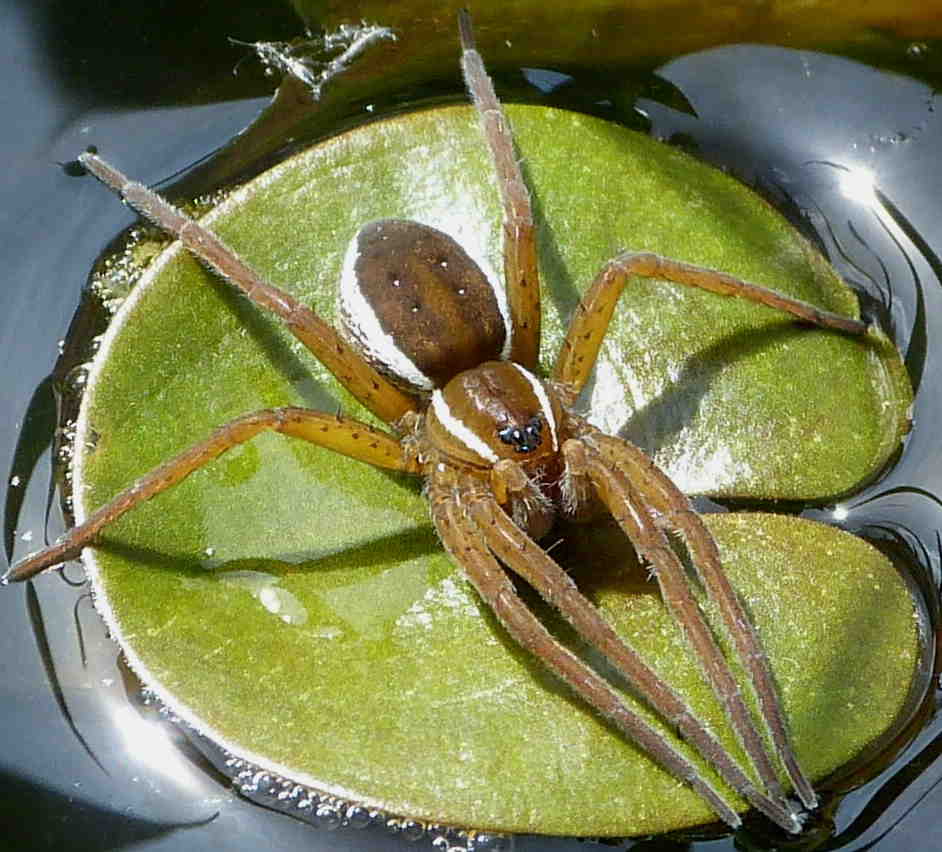Is it a Dolomedes?
As adults, the two European Dolomedes species are usually striking and distinctive in appearance. As well as being among Britain's largest spiders, they are usually characterised by a white, cream or yellow band along the sides of both the carapace and abdomen. These contrast with the darker brown or black body which is densely covered with a velvety coating of short hydrophobic hairs. The lateral bands result from both pale hairs and skin pigmentation. In both species they may be the same or different colours on the carapace and abdomen, and the colours may change between instars. Again in both species, some individuals have paired white spots either side of the mid-line of the abdomen, sometimes in a double row in the lower half.
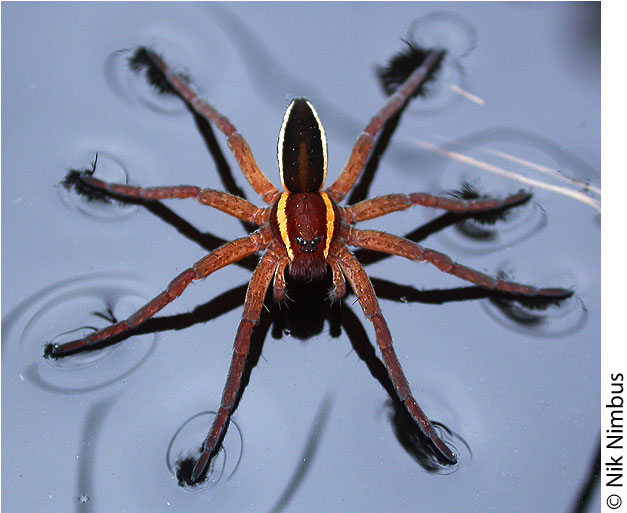
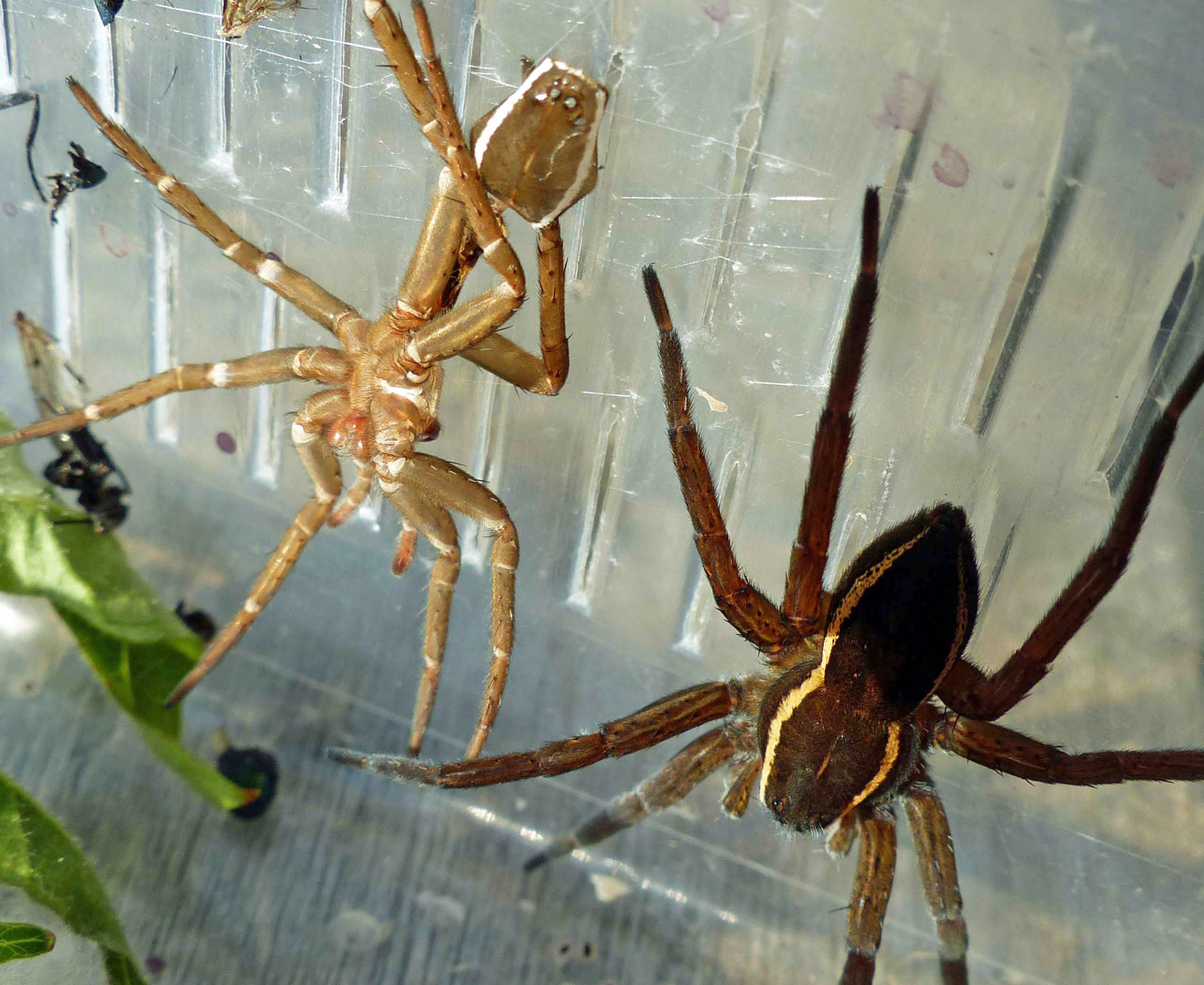
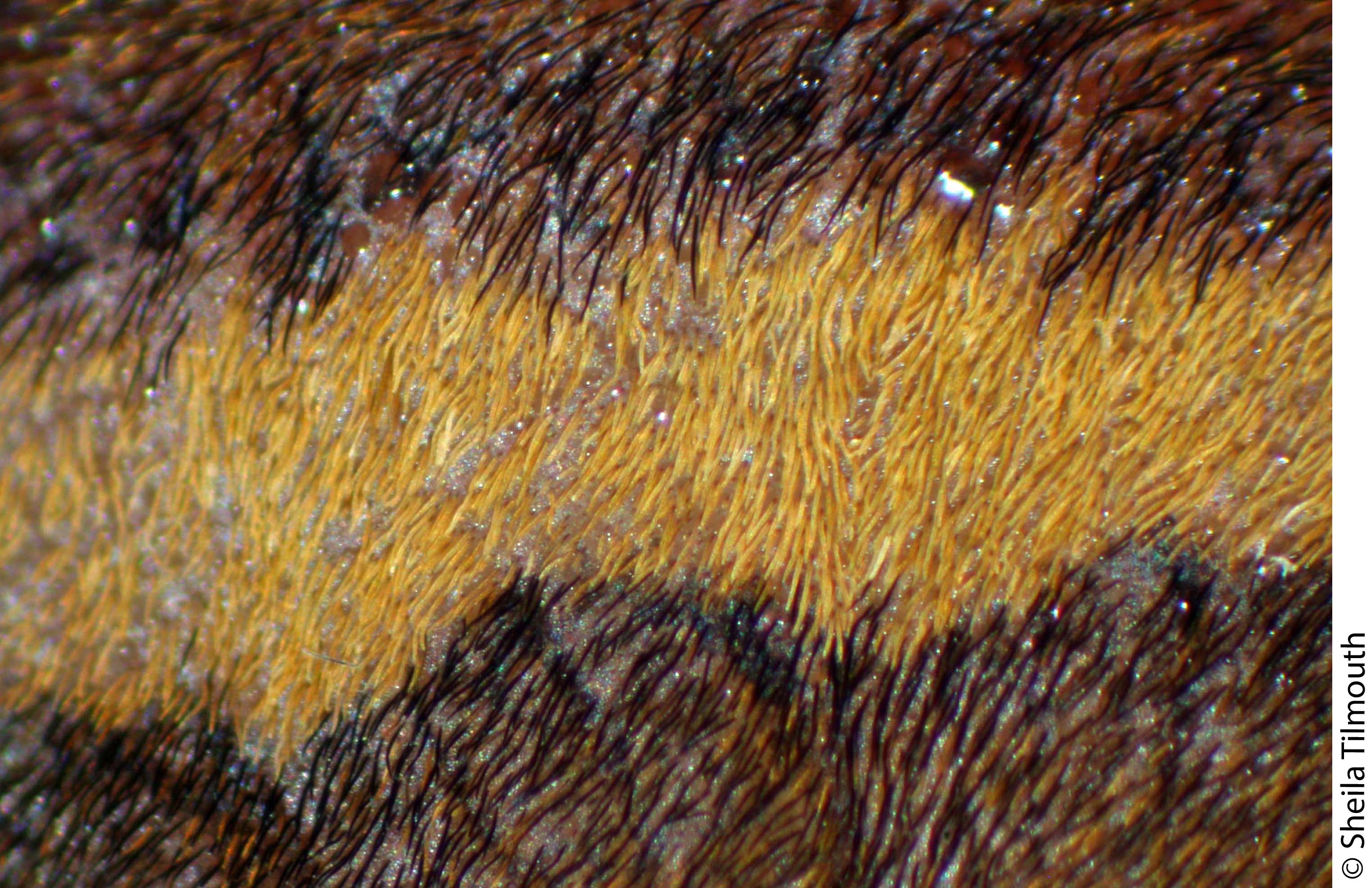

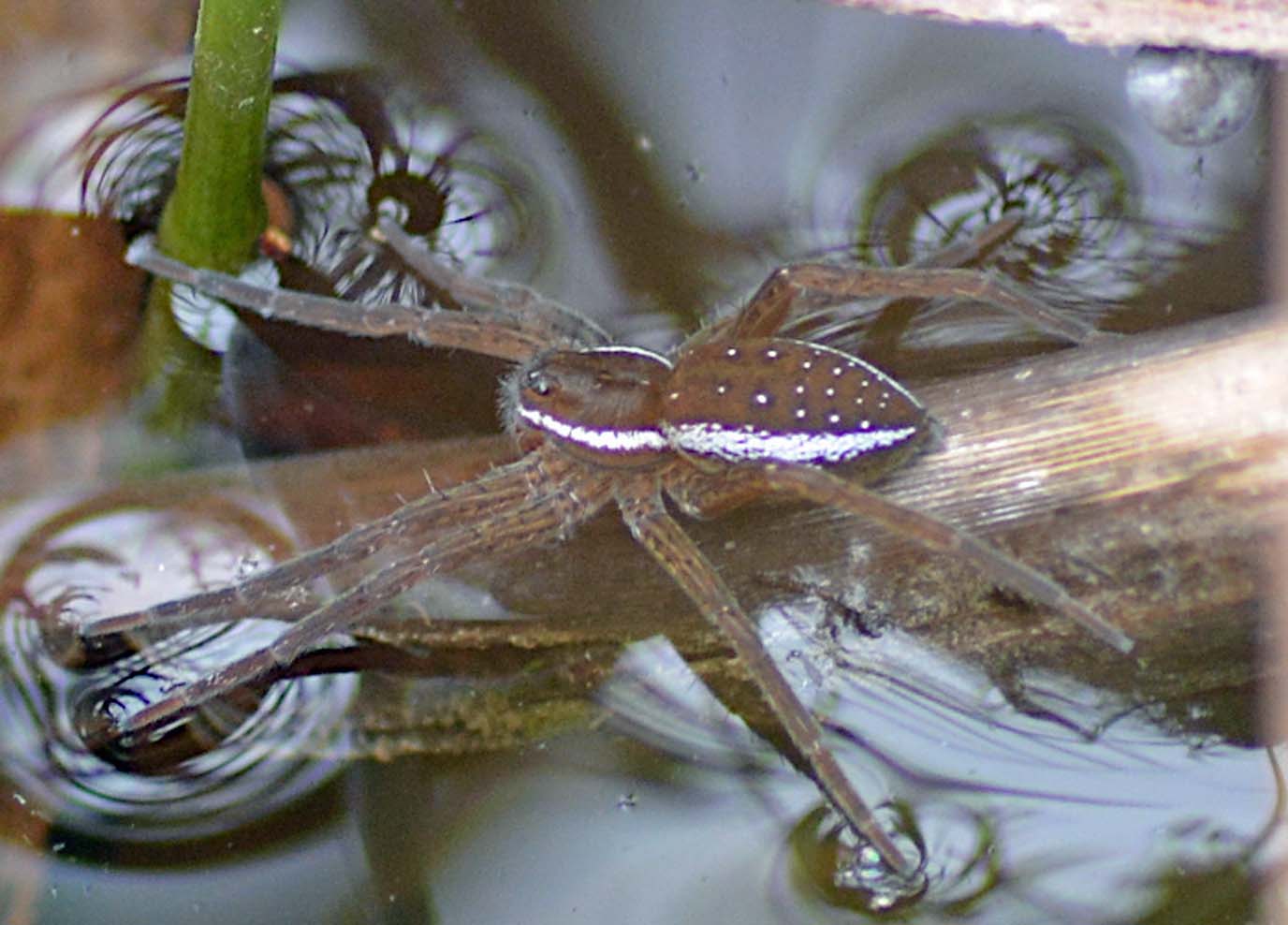
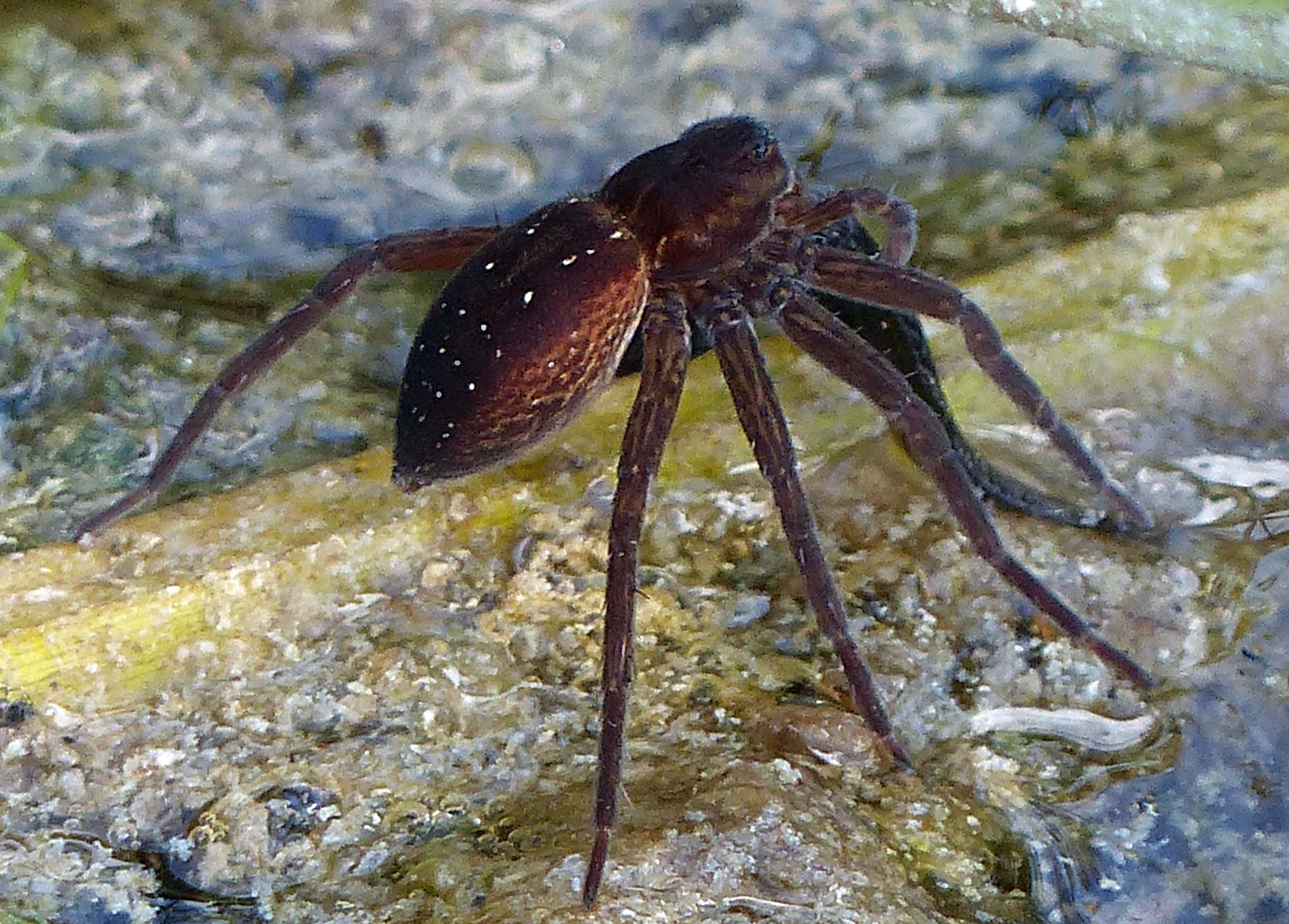
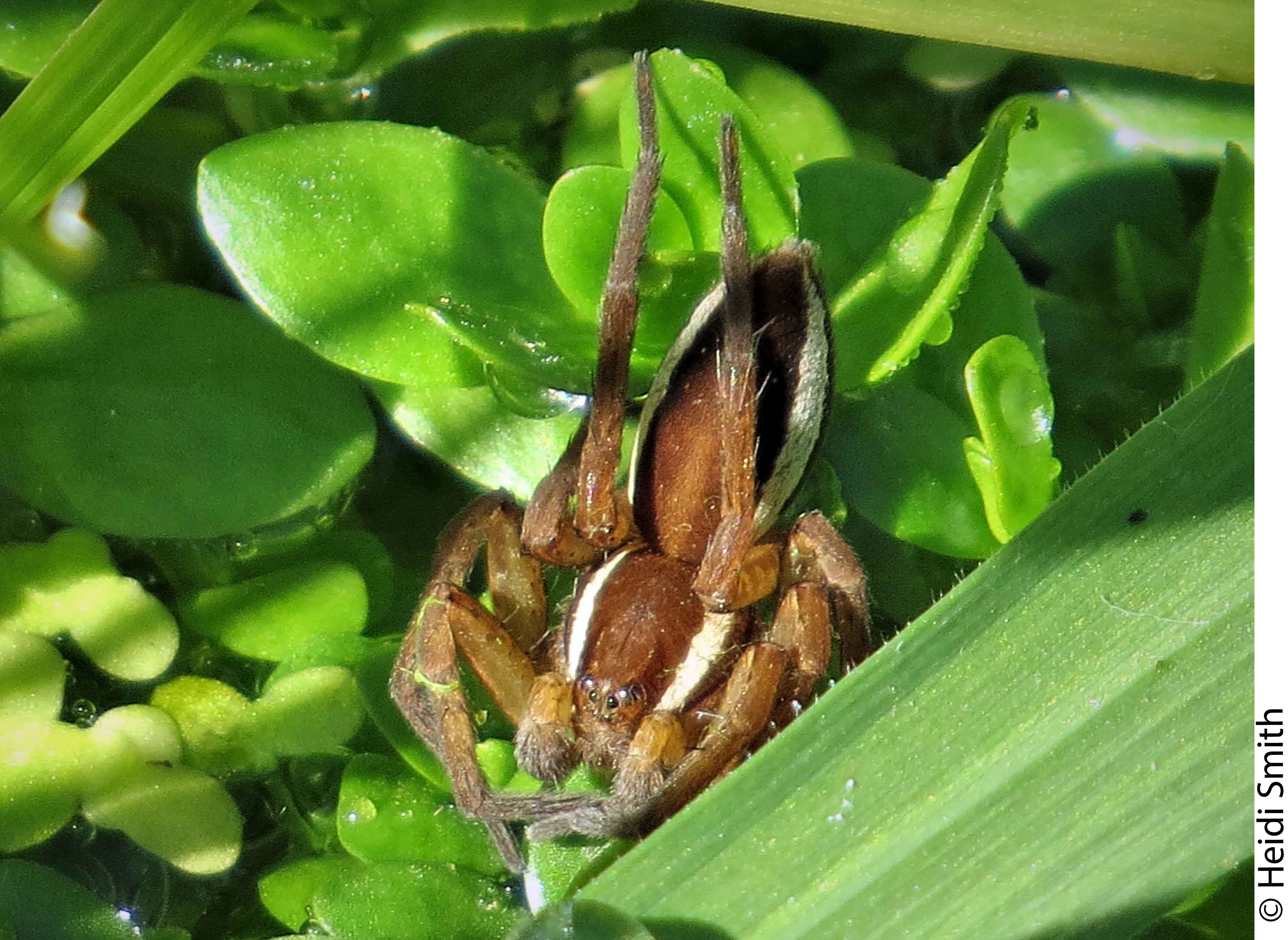
The size range, and aspects of the patterning and colour variation of the two Dolomedes species, all overlap with those of other European spider species but their overall appearance remains distinctive at all growth stages. In common with other members of the family Pisauridae, their bodies are essentially cigar-shaped, tapering towards both ends. Their posture is also typical of other pisaurids, with the front pair of legs held together, outstretched at an obtuse angle to the body. Like Pisaura mirabilis the Nurseryweb Spider, the only other member of the Pisauridae in Europe, the Dolomedes species can sometimes be found resting in an 'arms akimo' posture, with their front legs folded.
In common with other spider species, the sexes are indistinguishable until they are subadult, when the males start to develop swollen tips to the palps as the intromittent organ starts to form. When fully mature, the swollen ends of the male's palps become darker and sculptured. At the same time, the male's overall appearance becomes much more distinct from that of females and immatures. The carapace becomes broader and slightly shiny, and the abdomen becomes narrower and the legs proportionately longer than in females. Although females increase their body length at the final moult, males either stay the same or decrease in length, resulting in sexual dimorphism. The extent of this dimorphism is hugely variable between individual animals; females usually range in body length from ca 18-23 mm and males from ca 13-18 mm.

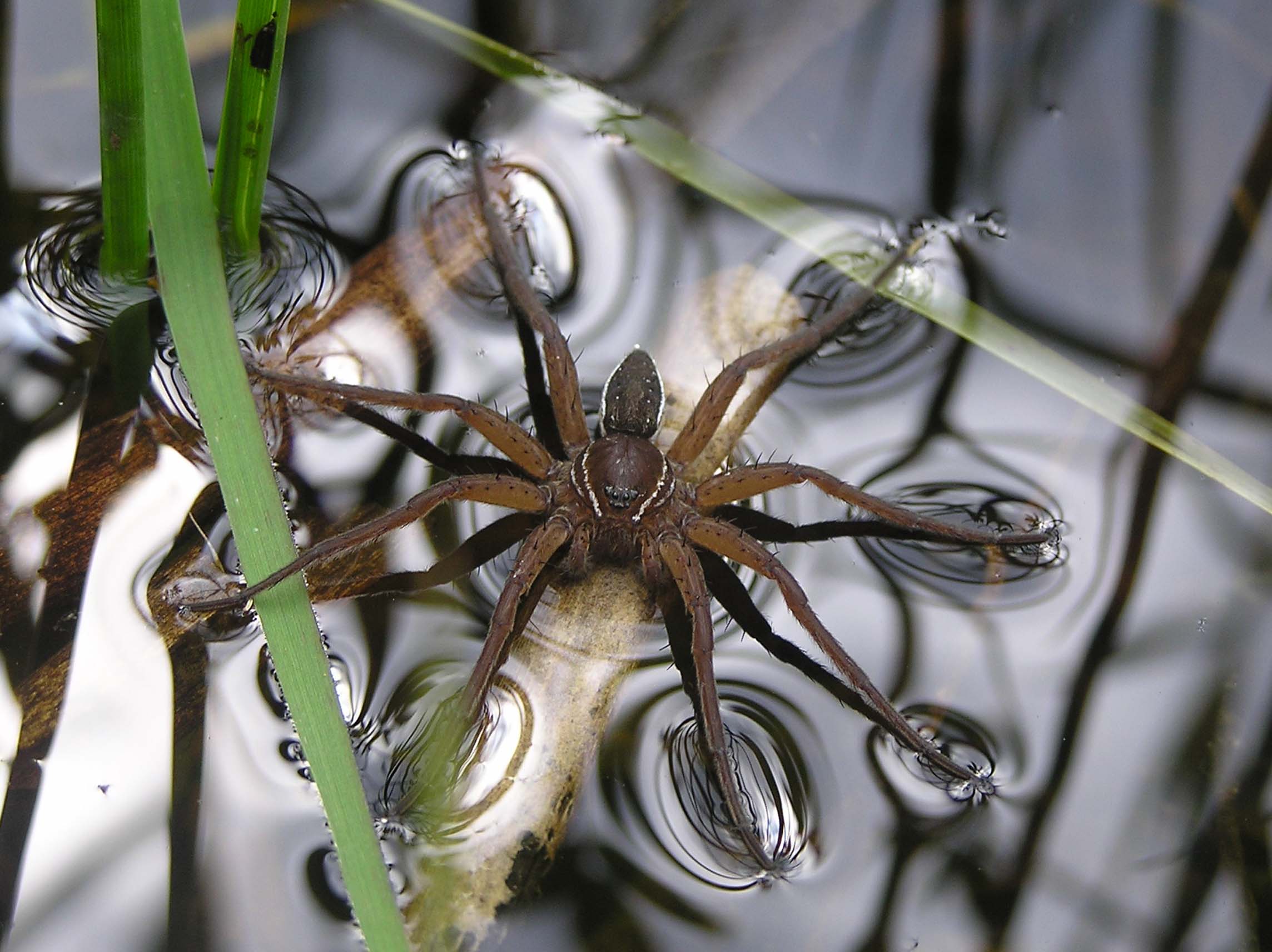
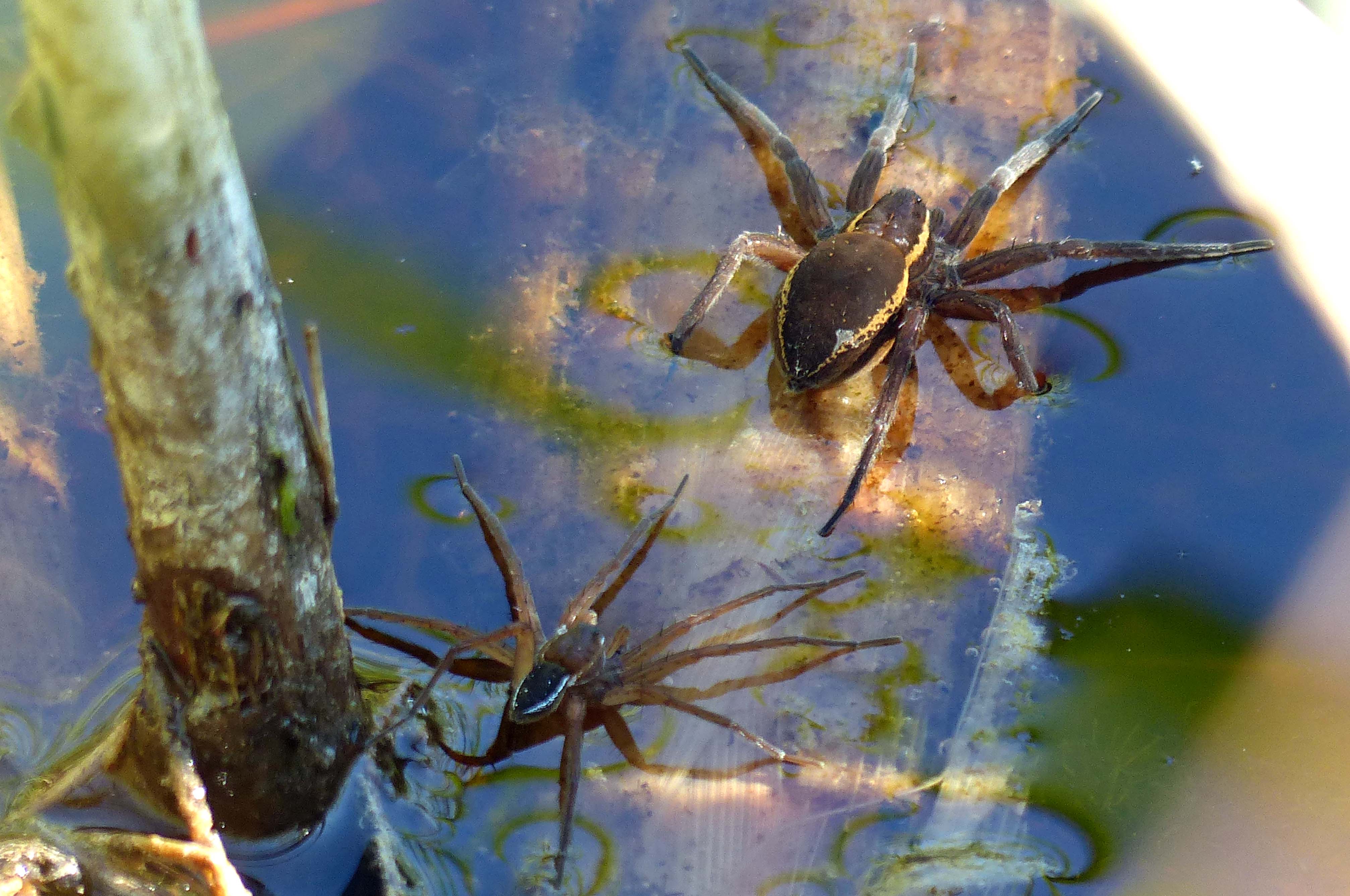
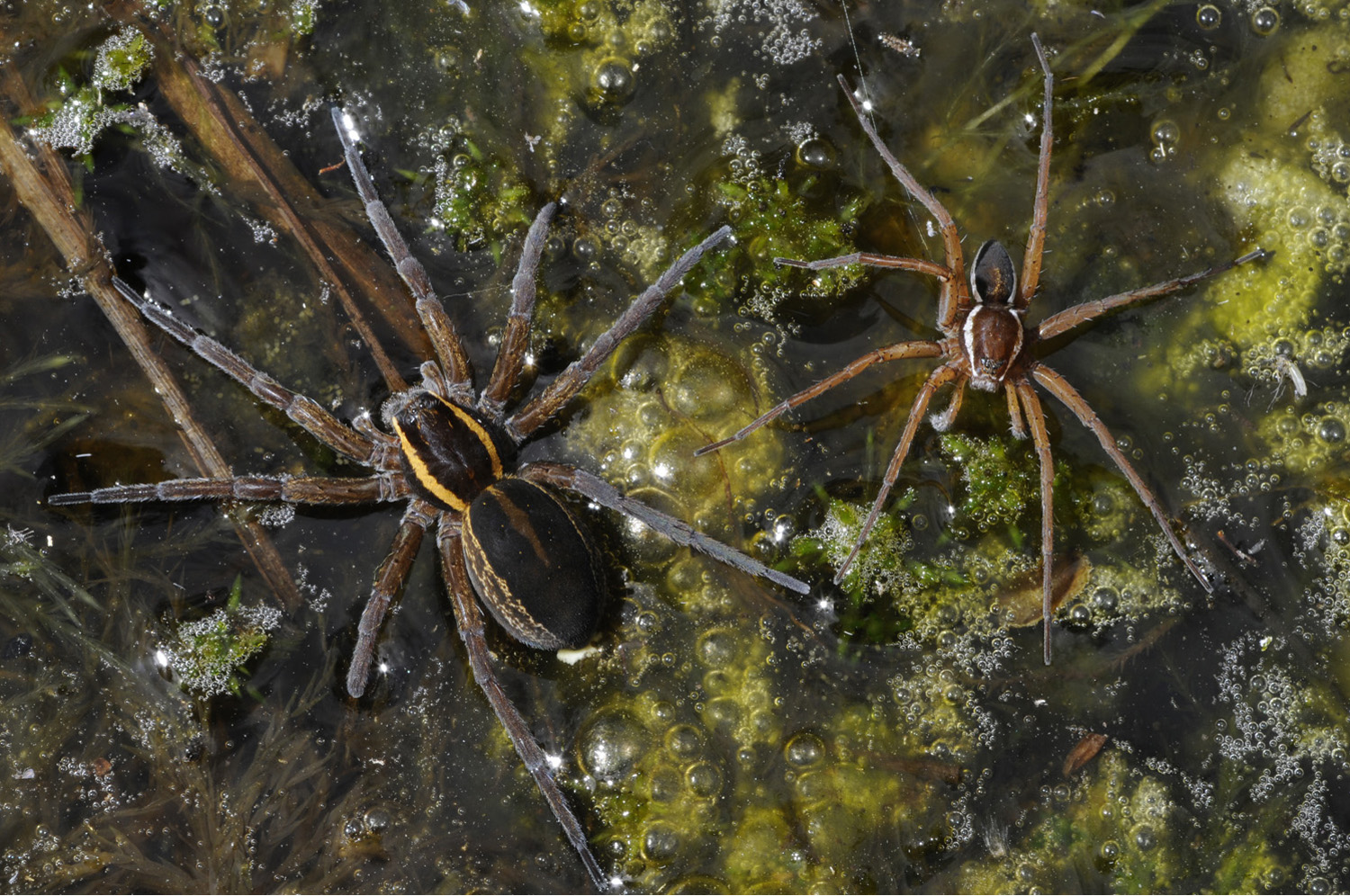

Adult females become increasingly conspicuous, first of all as their abdomens swell with eggs, and later when they are carrying their bulky egg sacs. These vary in diameter, from around 8 to 15 mm, and are held in the chelicerae, usually attached by silk to the spinners as well. With the sac attached at these two points, the mother's abdomen is curled around the sac, and so, in 'face'-view, only her carapace is easily visible. When new, the egg sacs are smooth, grey and spherical but they become paler, browner and saggier with age (see Life history for more images).
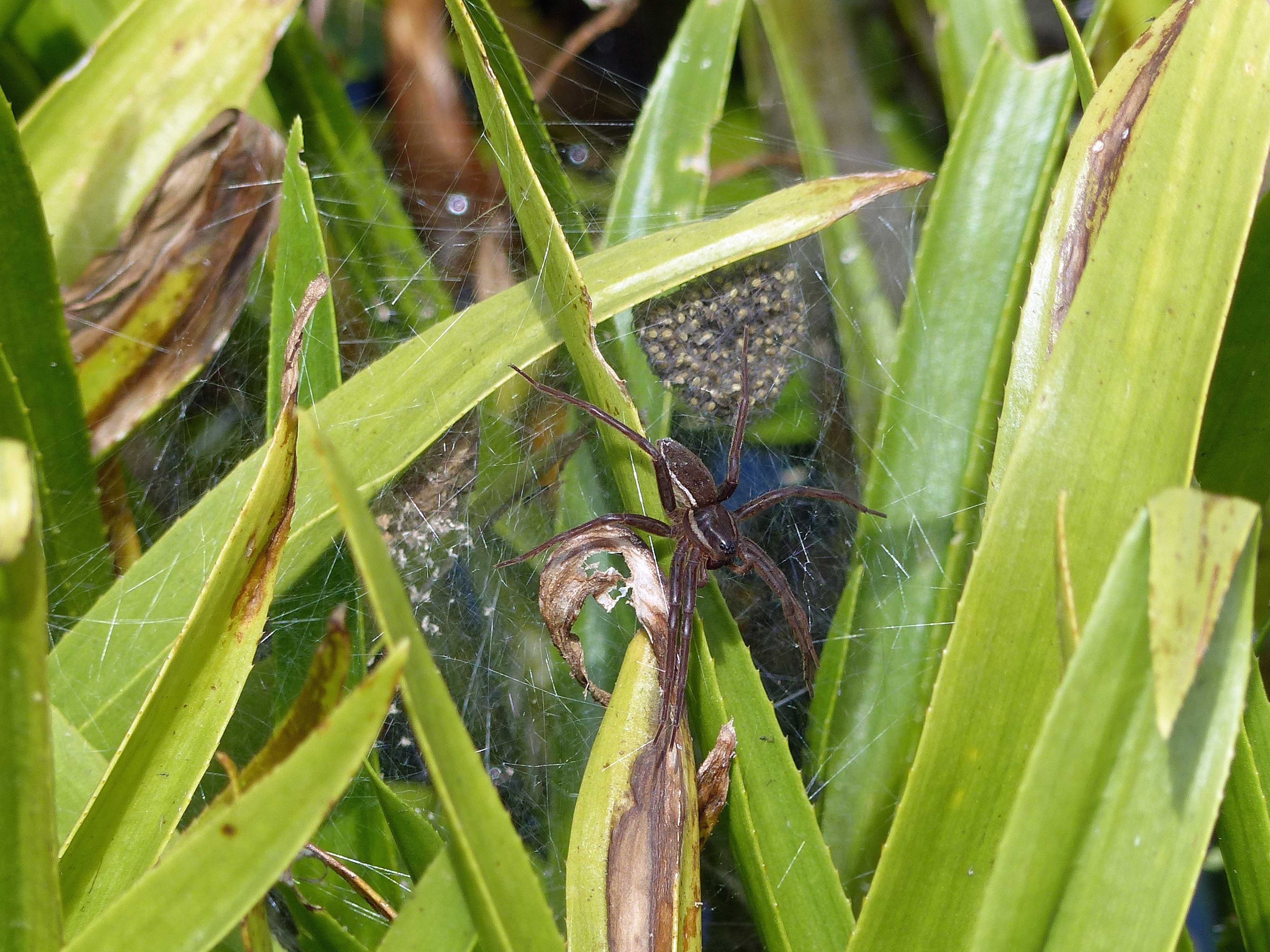
A final, conspicuous feature that helps to distinguish Dolomedes from other spiders in Britain and Europe, is the nursery web that they construct for their newly hatched young. This is a dense, three-dimensional framework of silk, built in stiff-leaved vegetation in wetland habitats. Including the anchoring threads, these can be up to around 30 cm in diameter although the dense core of the web is usually 10-15 cm in diameter and can be smaller. The webs are particularly conspicuous when dew collects on the silk strands. Until they disperse from the nursery, the tiny spiderlings can be seen within it, usually clustered into one or more dense balls during the day. If the web is disturbed, the ball 'explodes' and the spiderlings disperse rapidly along its anchoring threads. The spiderlings also disperse throughout the web at dusk, regrouping at dawn. The nursery is also characterised by the presence of the torn remains of the large, brown, silk egg sac and, below it, by a trails of tiny whitish skins resulting from the spiderlings first moult. The spiderlings hatch, and undergo their first moult, within the sac, dragging the skins out as they emerge.
Is it Dolomedes plantarius or D. fimbriatus?
Definitive separation of the two European Dolomedes species relies either on sequencing data or, much more usually, on expert examination of microscopic characters of the genitalia. The latter are only fully developed in adults; the species cannot not be reliably distinguished as immatures.
Adult female D. plantarius lack the hairs that, in D. fimbriatus, obscure the epigynal structures. Even within D. plantarius there appears to be variation in the appearance of the epigyne. Further images and diagrams showing critical features and variations in the epigynes of D. plantarius and D. fimbriatus are available on the Araneae - spider of Europe website.
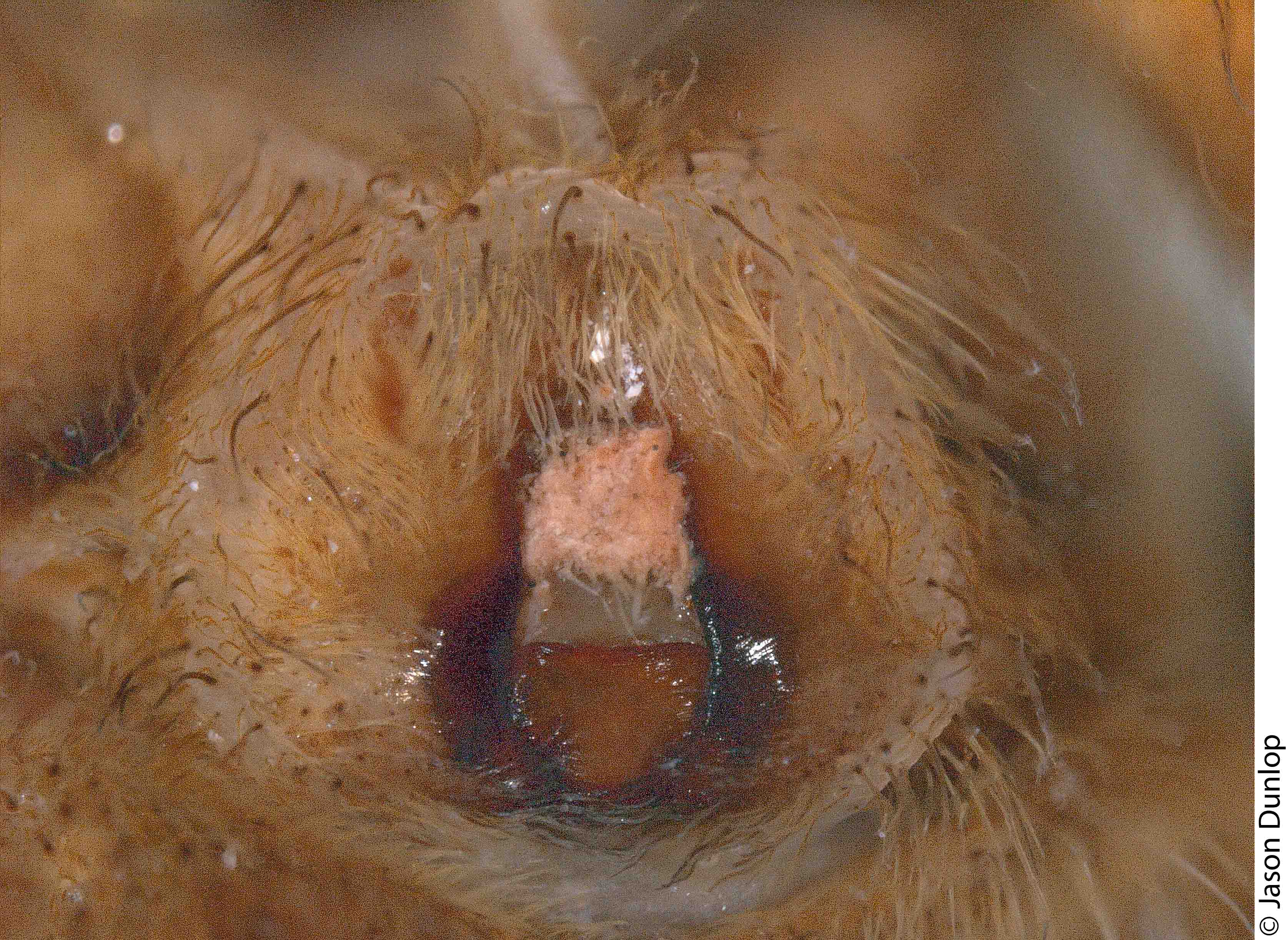
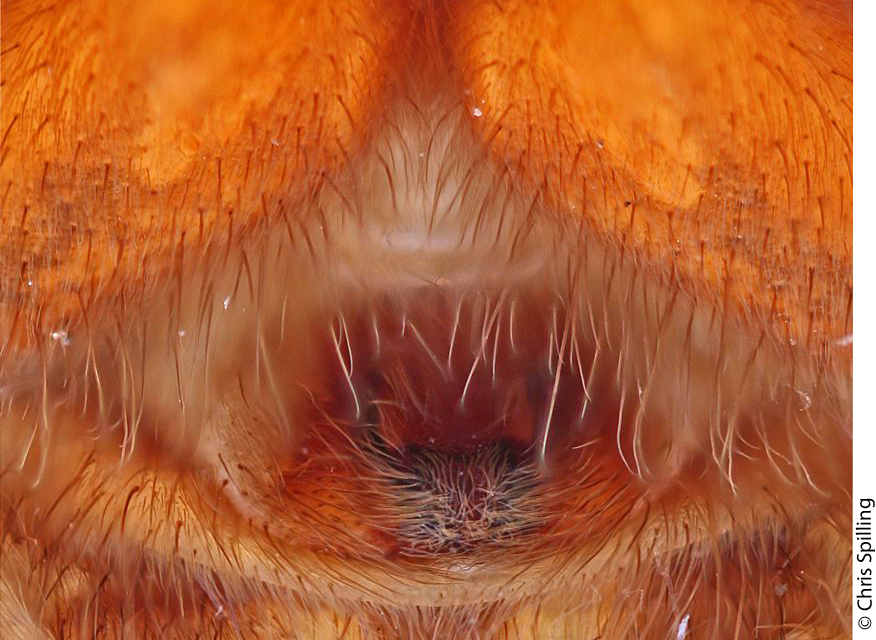
Adult males of the two species can be definitively separated by the structure of the tibial apophysis, one of the sclerotised projections on the pedipalps. In D. plantarius it is a bifid structure with a relatively flattened top (mitten-shaped) but it is simpler and more pointed in D. fimbriatus. Again, further images and diagrams showing critical features and variations in the structure of the male palp of D. plantarius and D. fimbriatus are available on the Araneae - spider of Europe website.
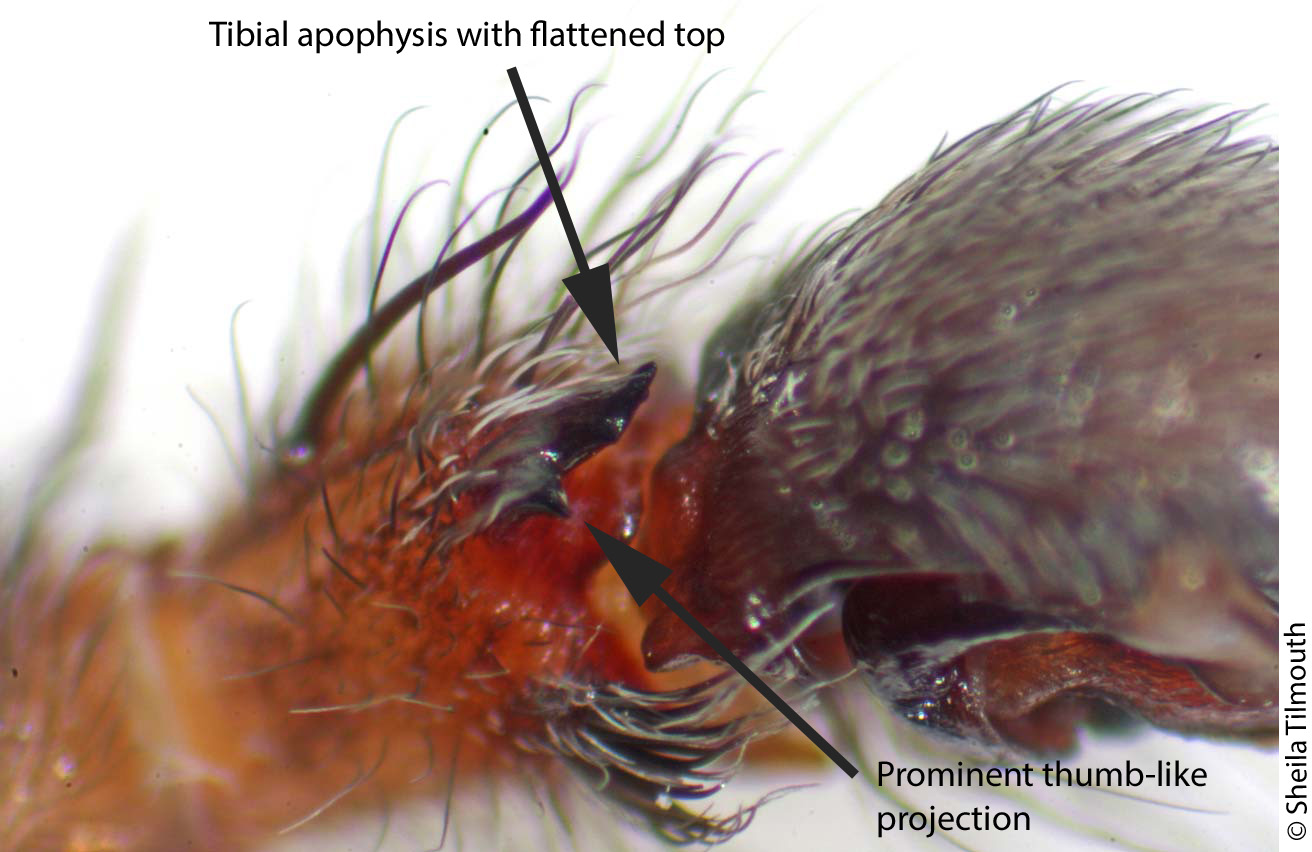

Although it cannot provide definitive identification, the two species tend to differ in their colouration. One reliable difference between them is provided by a lack of lateral bands in up to around 30% of individuals in D. plantarius but not D. fimbriatus populations (GB data). Finding unbanded individuals in a Dolomedes population is thus a very good indicator of D. plantarius, although some caution is required. Very rarely, D. fimbriatus individuals are found with only very feint lateral bands, as seen in the contrasting British examples pictured from the New Forest, Hampshire, and the Shropshire Mosses. In D. plantarius the presence or absence of a band appears to be determined by a simple Mendelian system, with unbanded being the recessive form (Baillie et al. 2020).
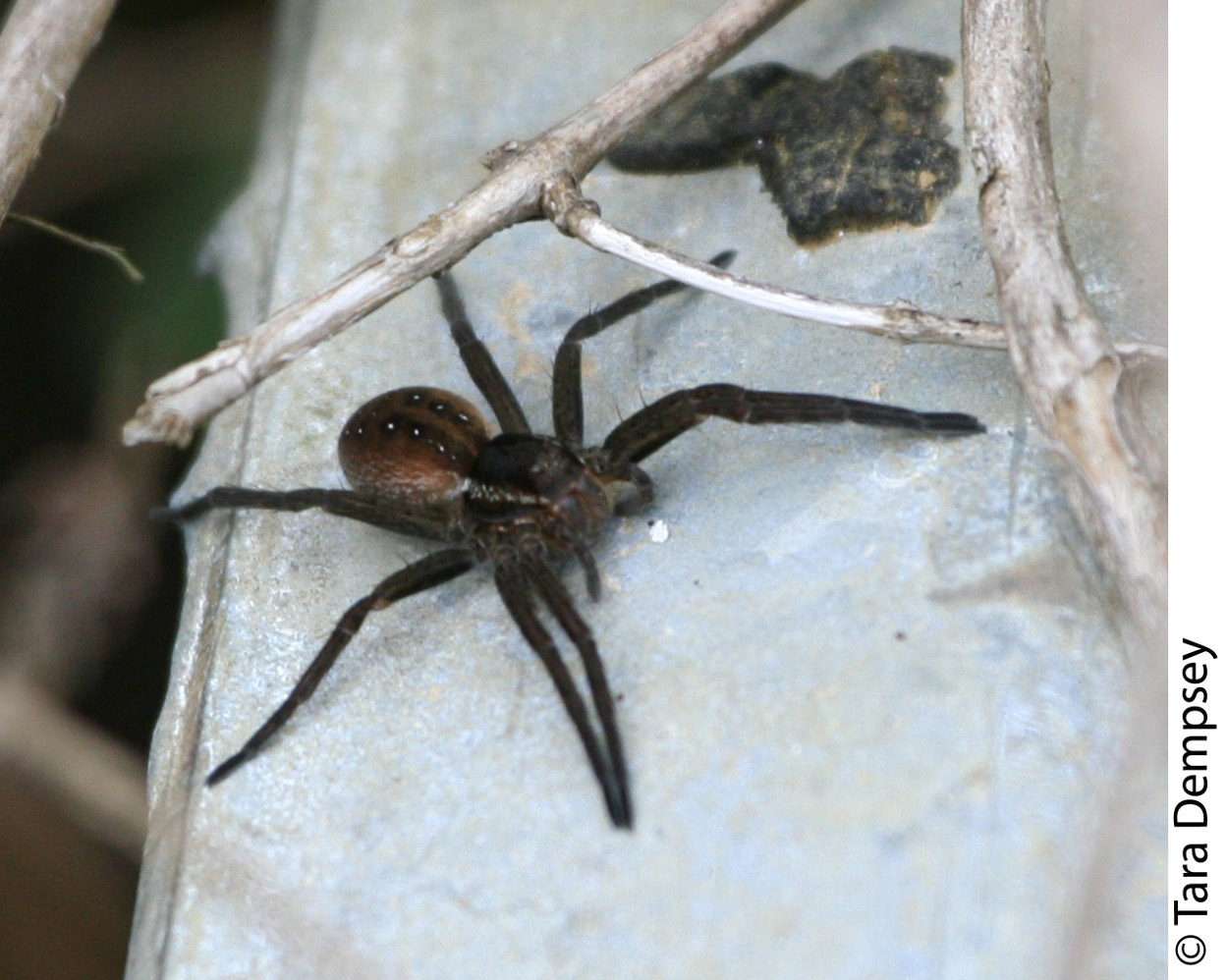
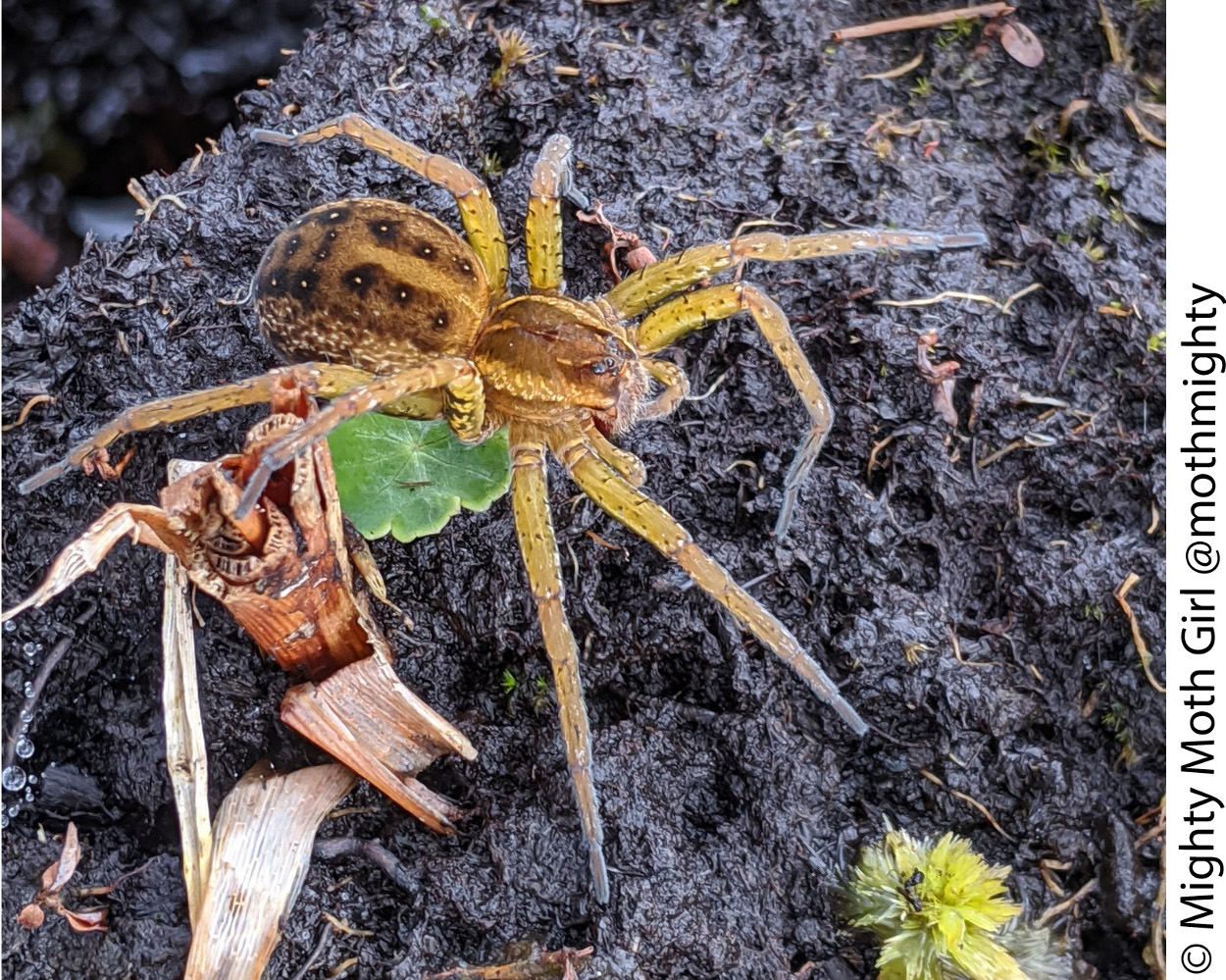
In some males, a double band is present which appears to be only partially controlled by the dominant-recessive system. Although this system controls the presence or absence of pale bands on the side of the carapace and abdomen, it does not appear to control the presence of a very narrow white band at the lower edge of the carapace in many male D. plantarius.
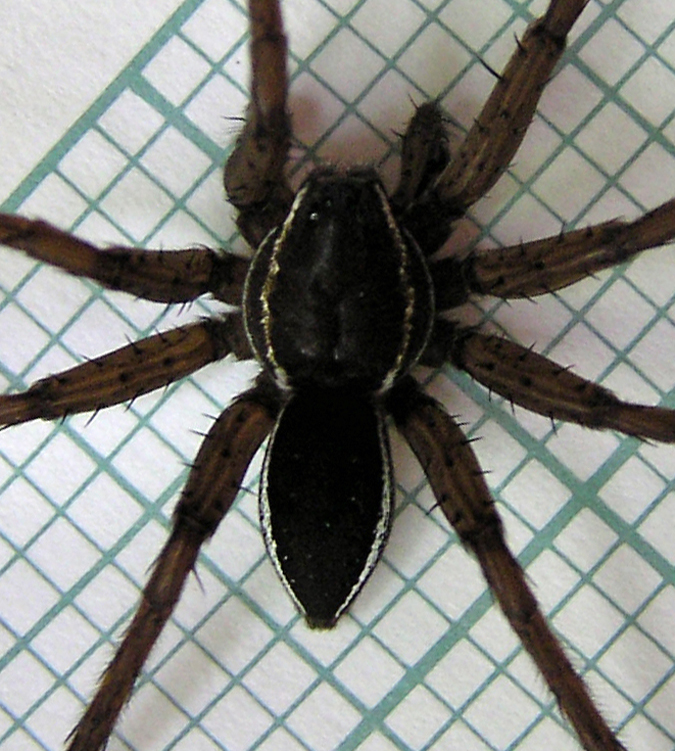

In addition to the presence of a morph that lacks lateral bands in a sometimes significant minority of D. plantarius individuals (above), colour variation tends to be greater in D. fimbriatus than in D. plantarius and the lateral bands also tend to be wider, particularly on the abdomen, and often more broken by tiny streaks of the ground colour.

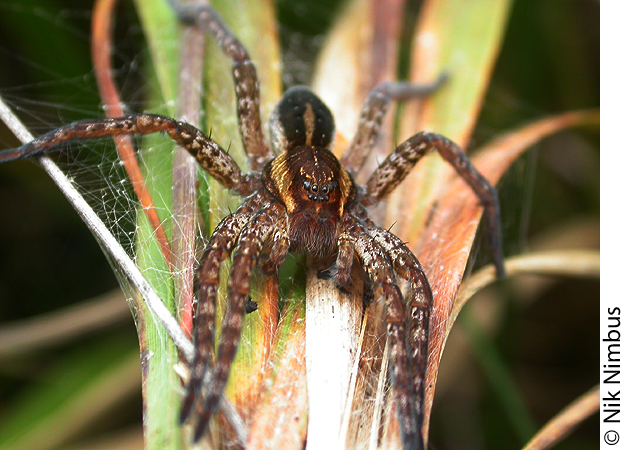

Some other colour differences seem to be reasonably consistent between the species although they cannot provide a definitive separation. Dolomedes fimbriatus usually has a more conspicuous lights cardiac mark on the top of the abdomen than D. plantarius. Newly-moulted juveniles of both species often have a greenish tinge to their legs but this is much more pronounced and persistent in D. fimbriatus than in D. plantarius. In some populations of D. fimbriatus some individuals have pale flecking on the legs - a feature not recorded in British D. plantarius populations.
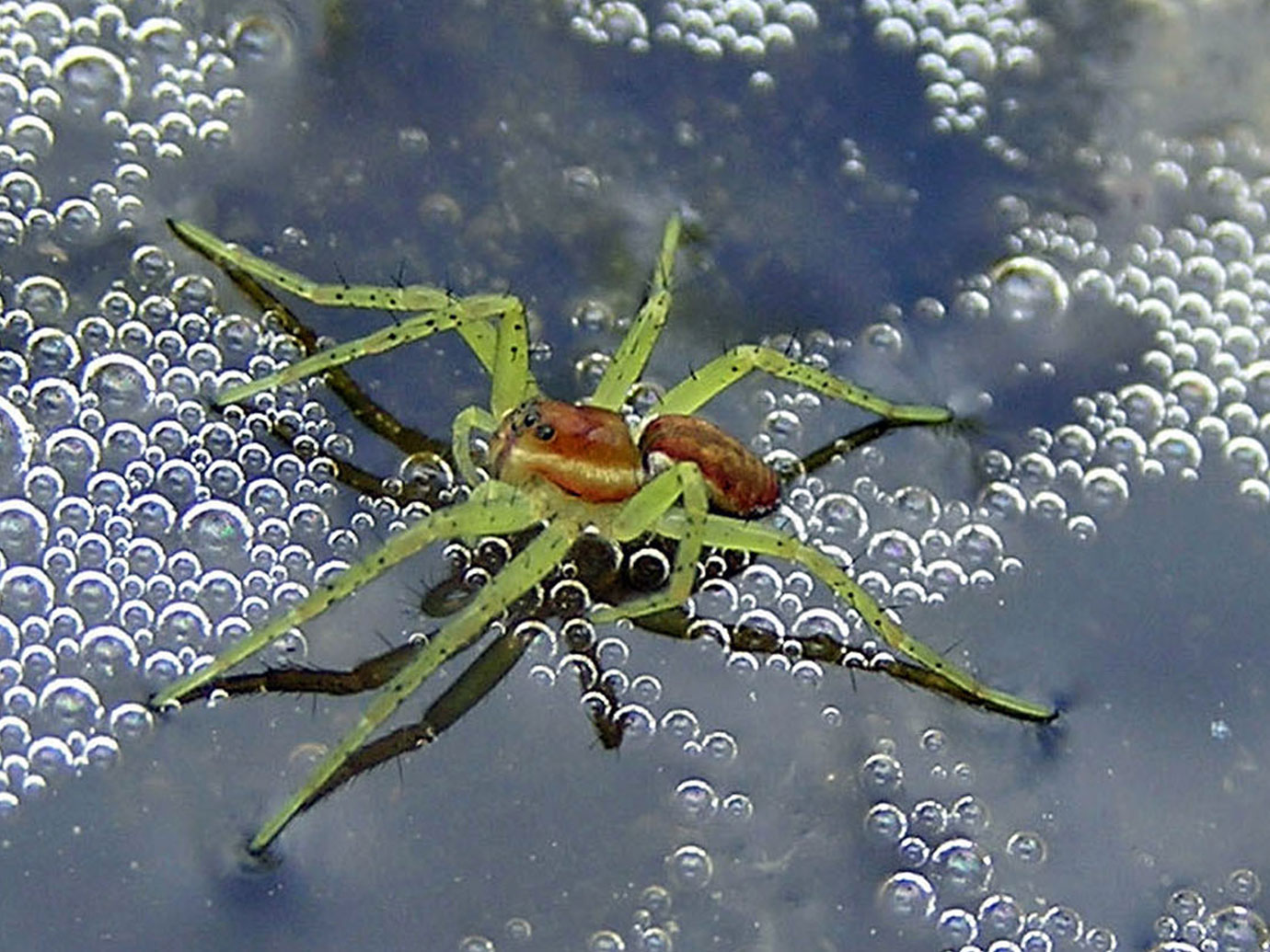
Dolomedes fimbriatus spiderling with green legs
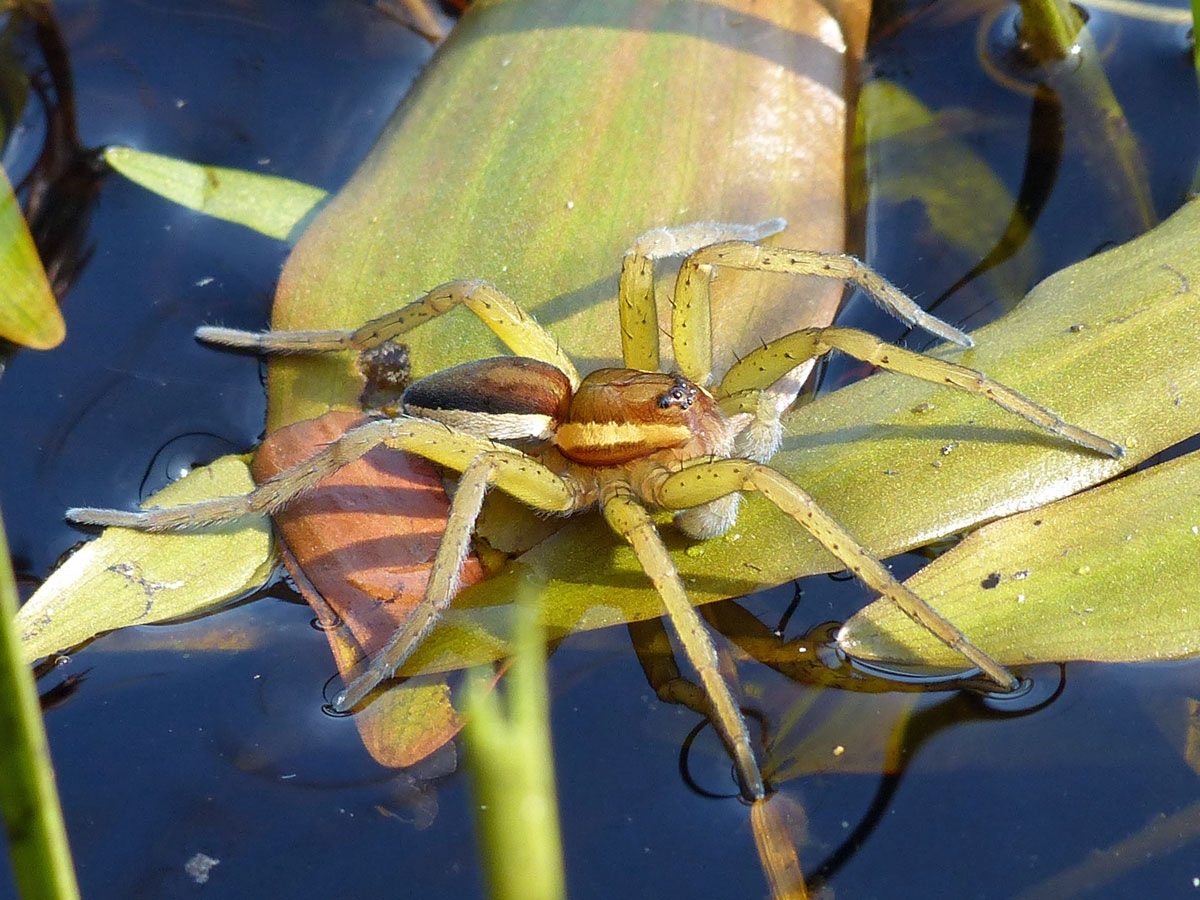
As adults, both Dolomedes species exhibit a very variable degree of sexual dimorphism (see Is it a Dolomedes? above). Although there is a general impression that this tends to be greater in D. fimbriatus, this potential difference between the species is not adequately quantified and cannot be used as an indicator of identity.

An interesting behaviour observed in immature D. fimbriatus but much more rarely in D. plantarius, is the construction of silk platforms on leaf surfaces, on which the animals rests or sits in ambush (observed by Stephen Barlow). These might simply result from an accumulation of dragline silk on a favourite perch.
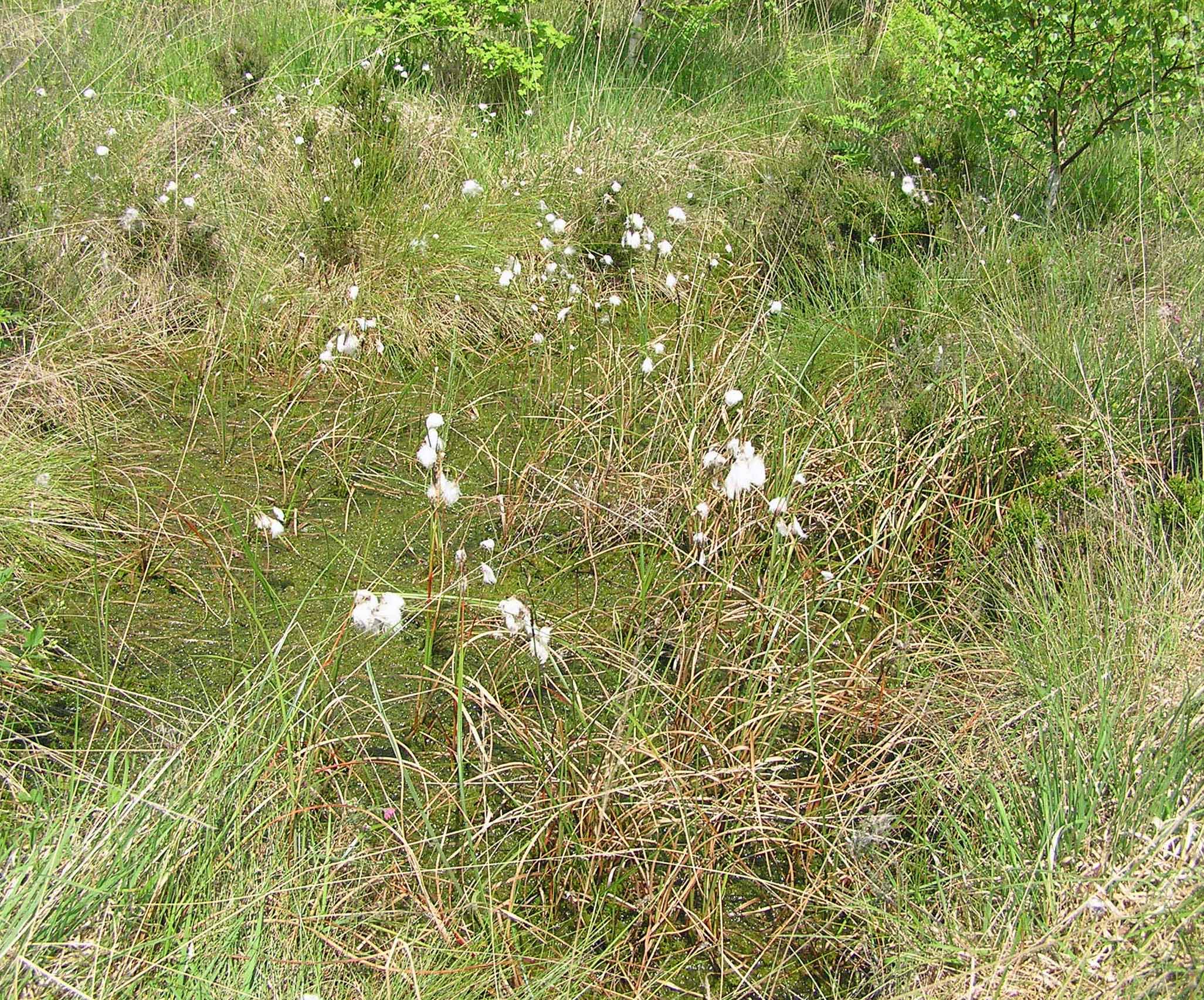
Habitat type provides a further indicator of species identity. The usually lowland, neutral to alkaline wetlands preferred by D. plantarius contrast with the lowland wet heaths and upland acid mires usually frequented by D. fimbratus. The latter appears to be rather less dependent on proximity to open water, often constructing its nursery webs in shrubby species such as Myrica gale and Calluna vulgaris. Immature D. fimbriatus have been observed on several occasions in trees during the winter, something not recorded in D. plantarius.
Conditions suitable for both Dolomedes species may exist in close proximity in some sites. Populations of both species have been recorded sympatrically from sites in France. However, although the two species are rarely recorded sympatricay (Duffey 1995, Helsdingen 1995), this can occur where a site provides a mosaic of suitable habitat types. In Britain, D. fimbriatus is a species of acidic, wet heaths and upland mires (Spider Recording Scheme 2020a). It is less dependent on open water than D. plantarius, which is restricted to lowland fens, grazing marsh ditches, canals and other unpolluted neutral/alkaline water bodies (Spider Recording Scheme 2020b).
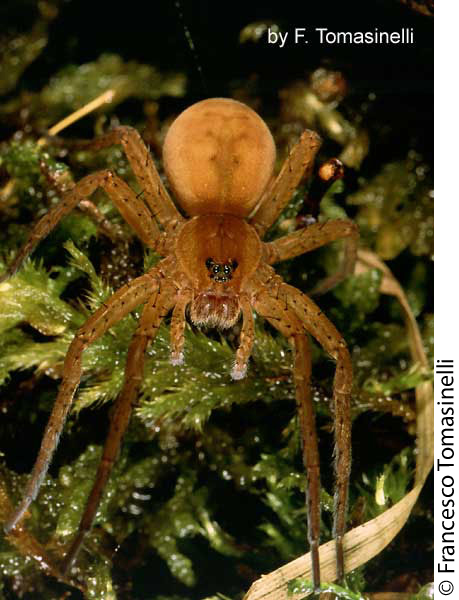
It should be noted that all of the above descriptions of D. fimbriatus and D. plantarius are based largely, though not exclusively, on observations made in Britain. Many spider species show variation across their geographical range and so they many not cover the full range of this variation. The banded/undanded dimorphism is found in D. plantarius populations from continental Europe (I am aware of it from the Czech Republic, Poland, Russia, Italy, France, and the Netherlands), although the ground colouration in this species varies greatly. For example, the orange-brown colour morph illustrated from northern Italy has not been recorded in Britain.
In recent years, genetic markers have provided an alternative method of separating the two species (Vugdelic 2006). Although obtaining an identification by this means is both slower and more expensive than by morphological examination, it has two important advantages. First, it and can be used to identify all developmental stages rather than just adults. Secondly, it can be used on small tissue samples (such as single legs) and even on the skins that are shed as the spiders grow (exuviae). This means that samples can be taken for identification without any damage to small and fragile populations.
Other species that cause confusion
Pirata and related Piratula species (otter spiders) are one of the most common sources of confusion over the identity of Dolomedes species in Britain. Like the Dolomedes species, these very closely related genera of lycosid (or wolf) spiders are largely semi-aquatic and several also have more or less distinct white lateral lines on the carapace and abdomen. Even when mature though, Piratas are no more than a third to a half the body length of adult Dolomedes. The largest of them in Britain is Pirata piscatorius, which reaches a maximum body length of 10 mm. This species is also the most similar to Dolomedes in having a very dark body with brightly contrasting white lateral bands, most prominent on the carapace, and paired white spots running longitudinally down the abdomen. However, the overall appearance, and the stance and posture of the Pirata and Piratula species is markedly different from that of Dolomedes. They have a high and squared-off front to the carapace and a bulbous rather than more pointed abdomen (although the distended abdomen of a gravid female Dolomedes is also bulbous, but very large). Their legs are relative short and robust compared with those of Dolomedes and are never held outstretched and paired (see above).
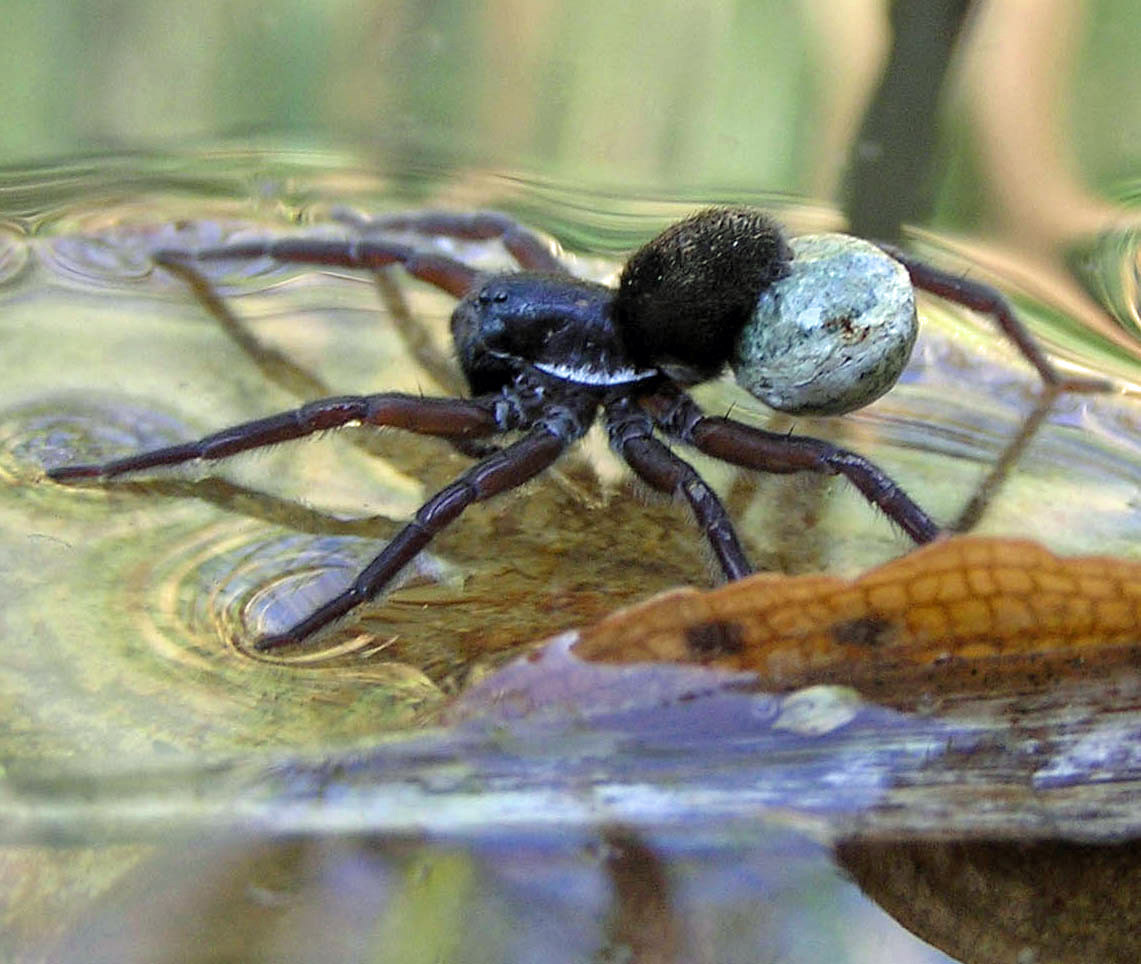
In the breeding season, female Pirata and Piratula species are often seen carrying egg sacs but, in contrast to Dolomedes, these are small (ca 5mm), white or bluish in colour and with a conspicuous seam around the equator. They are carried at the back of the abdomen, held only by the spinners. Like Dolomedes, these species are ambush hunters rather than web builders, but, unlike Dolomedes, they do not build any protective web structure for their young. They do, however, show maternal care, carrying their newly-hatched spiderlings on their backs for about a week, until they can fend for themselves. This behaviour is shared with other lycosids.
Pisaura mirabilis the Nurseryweb Spider is very closely related to the Dolomedes species (both genera are in the Pisauridae) and can look quite similar, although it occupies a very different habitat - it is a common terrestrial species that frequents grassland, tall herb and dwarf shrub vegetation. Although smaller than Dolomedes (adult females are 12-15 mm in length), P. mirabilis are similar in shape and very variable in colour, sometimes with bold abdominal markings including pale lateral lines. However, a constant distinguishing feature, including in juveniles, is a pale median line on the carapace, not present in Dolomedes.
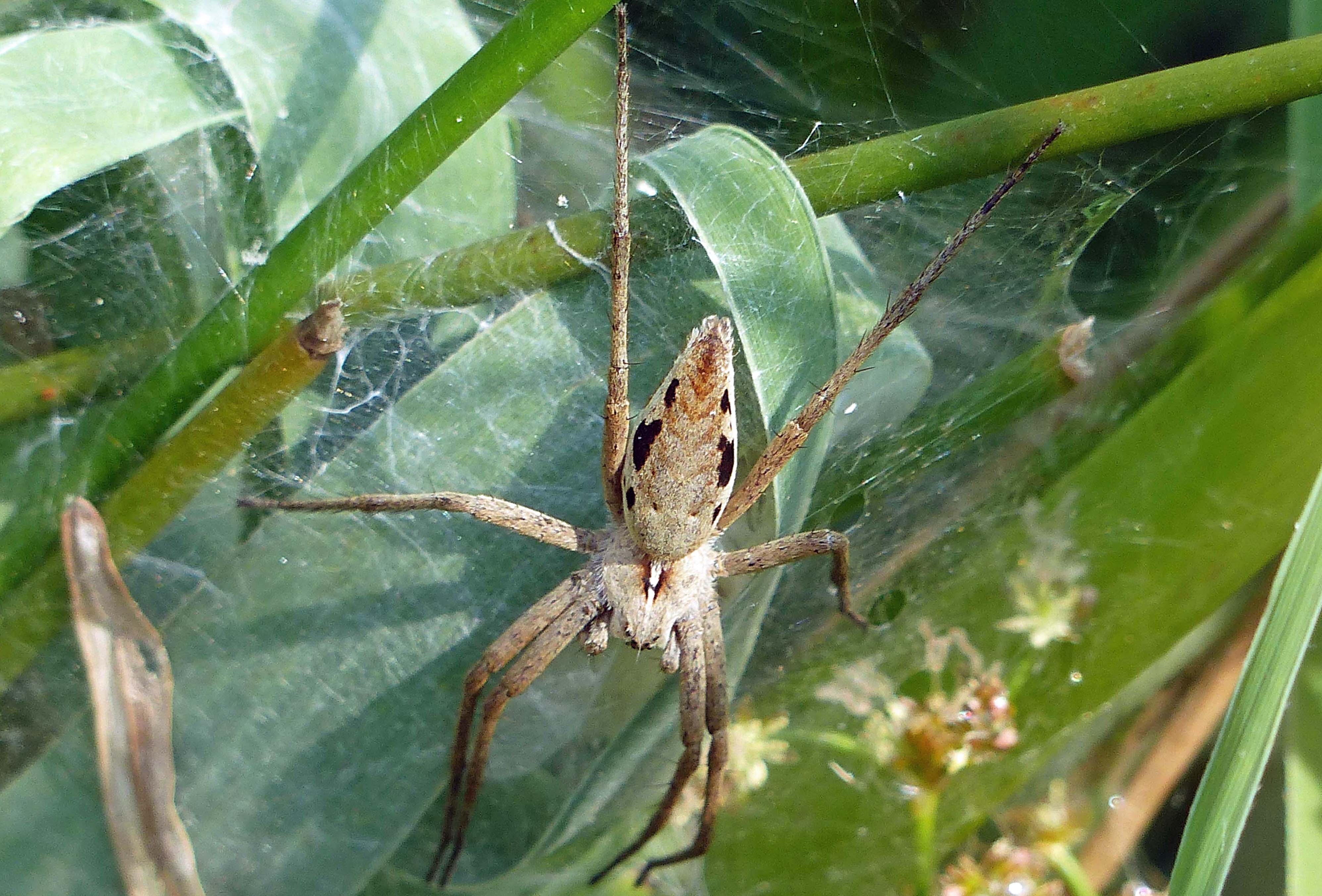
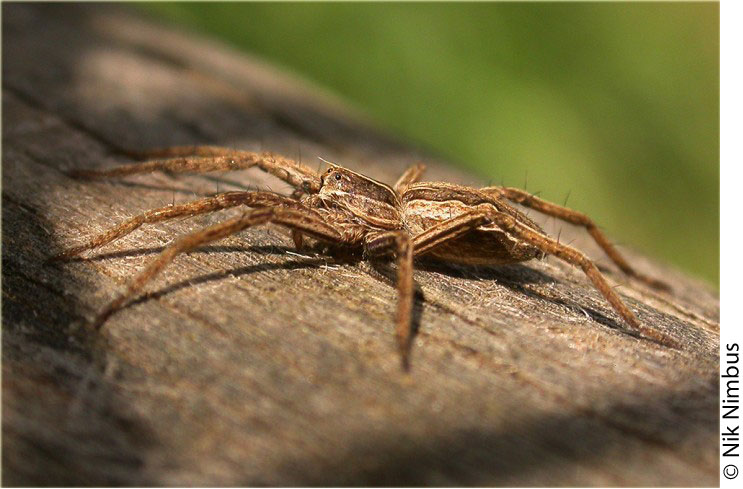
Pisaura mirabilis perhaps resembles Dolomedes most closely when the females are carrying their egg sacs and attending their nursery webs. As in Dolomedes, egg sacs are carried under the body, gripped by the chelicerae, but they are significantly smaller and much whiter than those of Dolomedes. The nursery webs are smaller, composed of denser silk and more clearly tent-like structures than those of Dolomedes, but they are, nevertheless, frequently mistaken for them. Confusion is most likely to arise where nurseries are are found in tall, water-side vegetation. The females' behaviour around the nursery offers a further aid to identification.
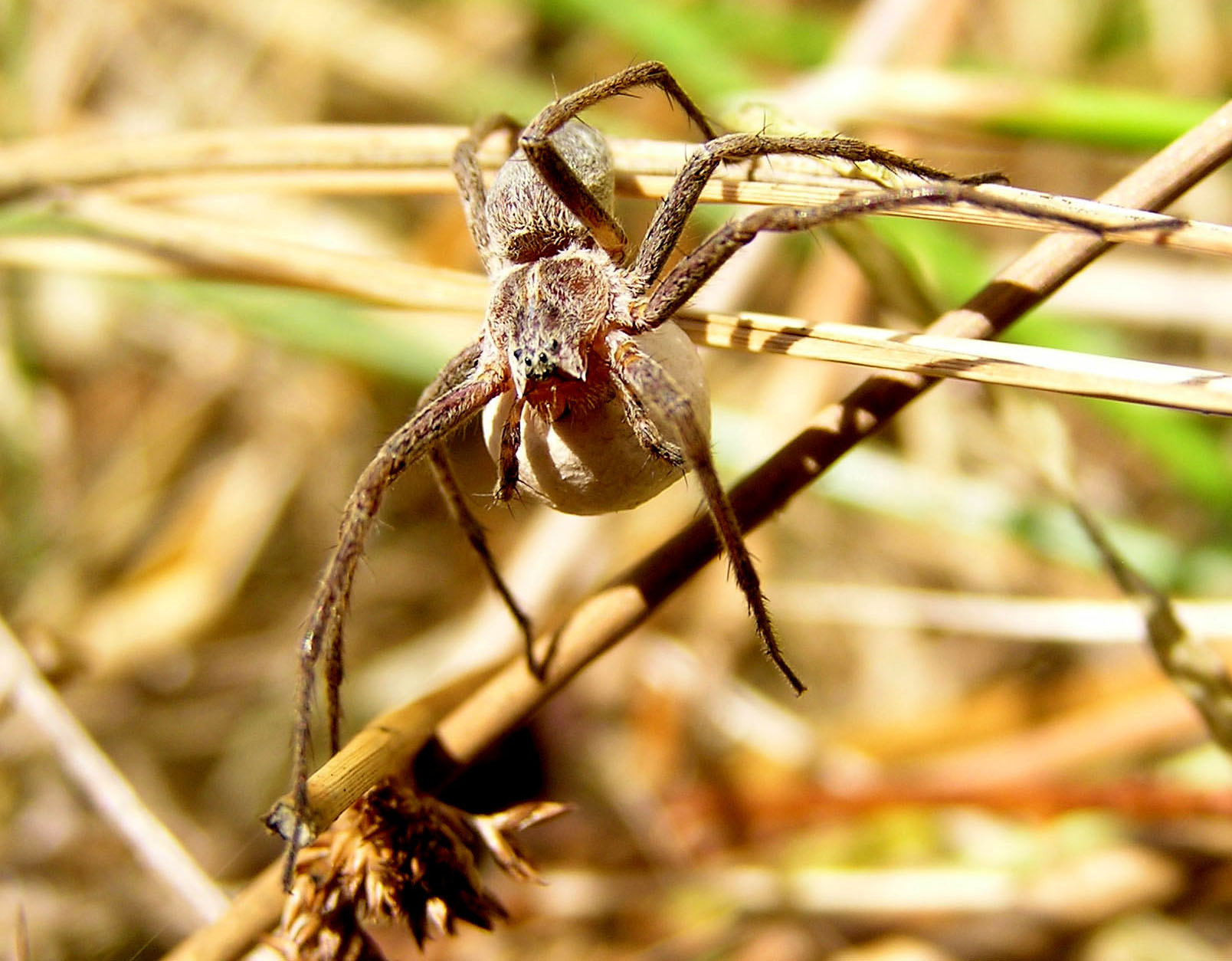
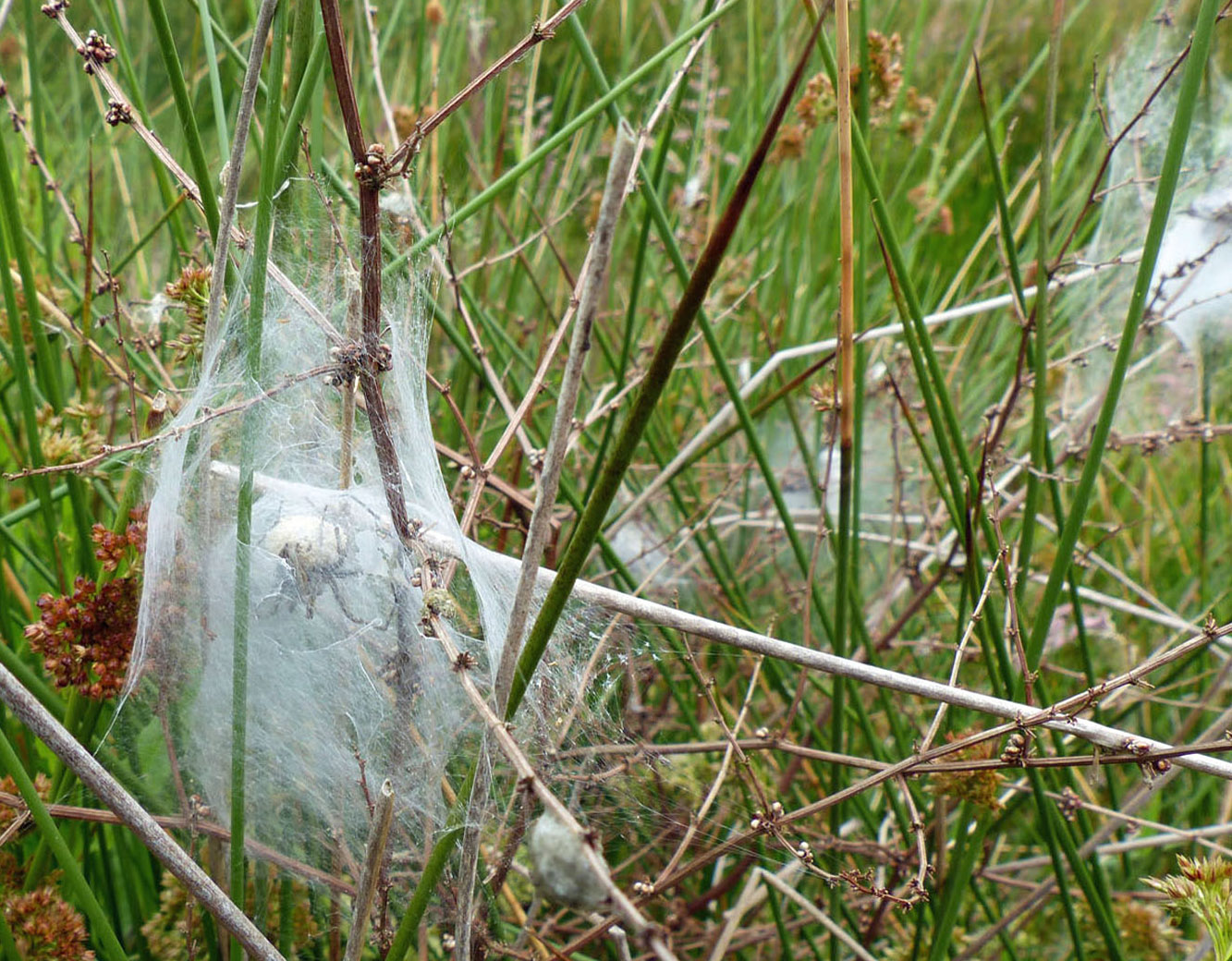
Dolomedes build their nurseries as their spiderlings start to emerge from the egg sac. By contrast, P. mirabilis build them at an earlier stage and can be seen sitting inside the tent holding their unhatched sac. Once the spiderlings emerge from the sac, the mother moves to a guarding position on the outside of the nursery tent. At this stage, the very dark spiderlings can be seen inside, usually clustered in a dense ball, with the remains of the whitish egg sac nearby. Female Dolomedes frequently also sit on the exterior of their nursery to guard their brood but their spiderlings are bigger, lighter brown, and more numerous than those of P. mirabilis, forming large clusters within the nursery (see Life history).
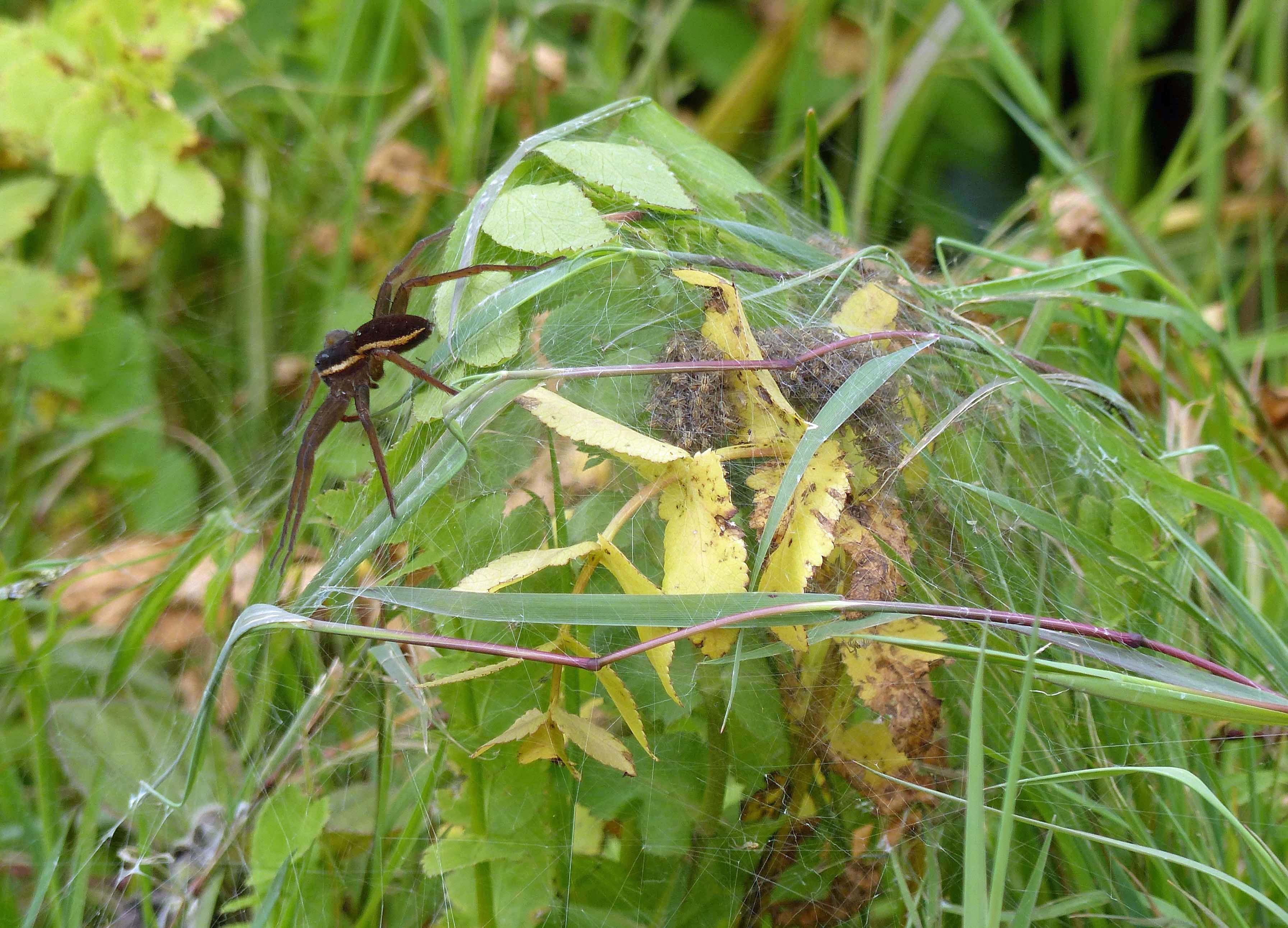
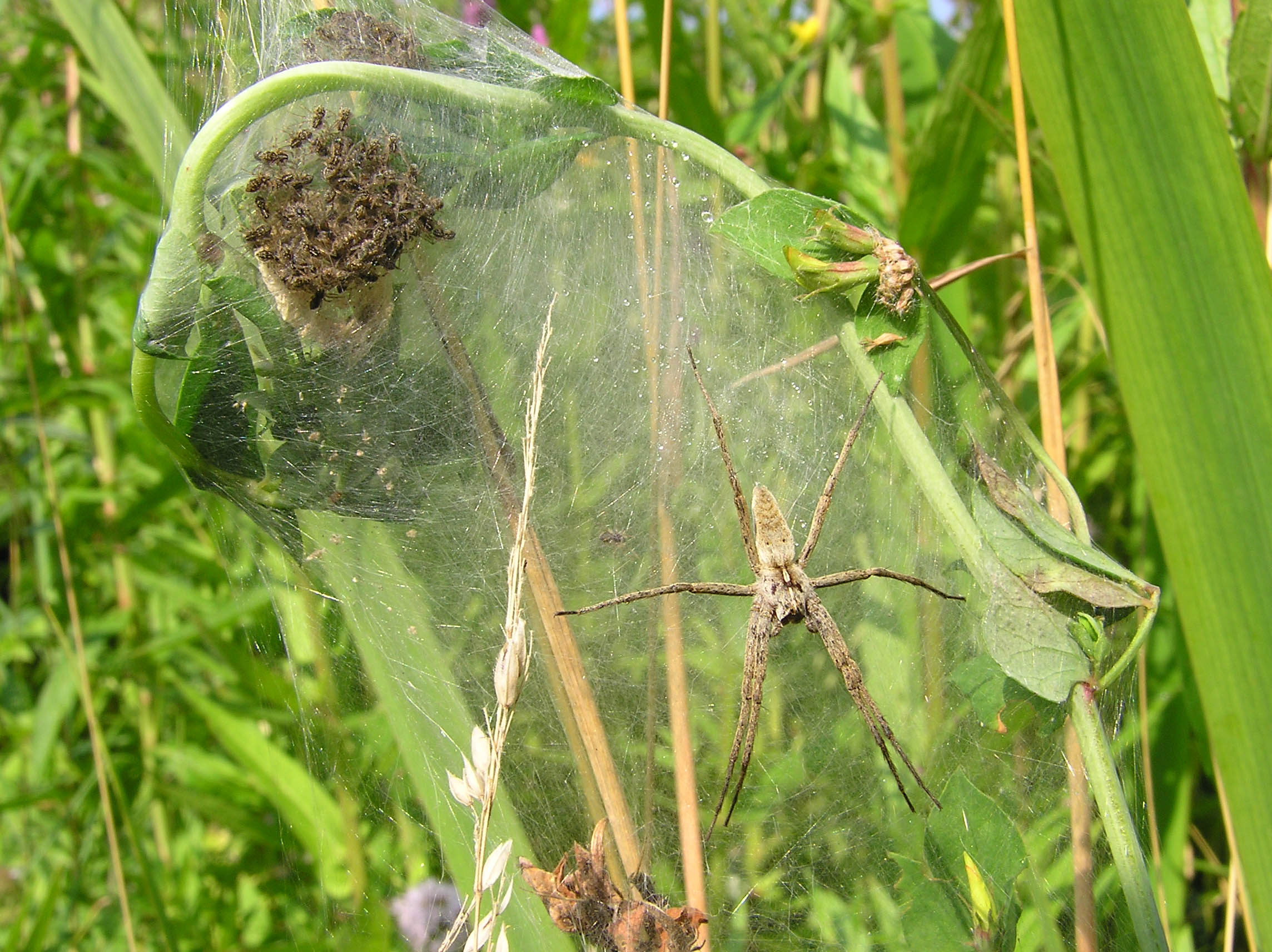
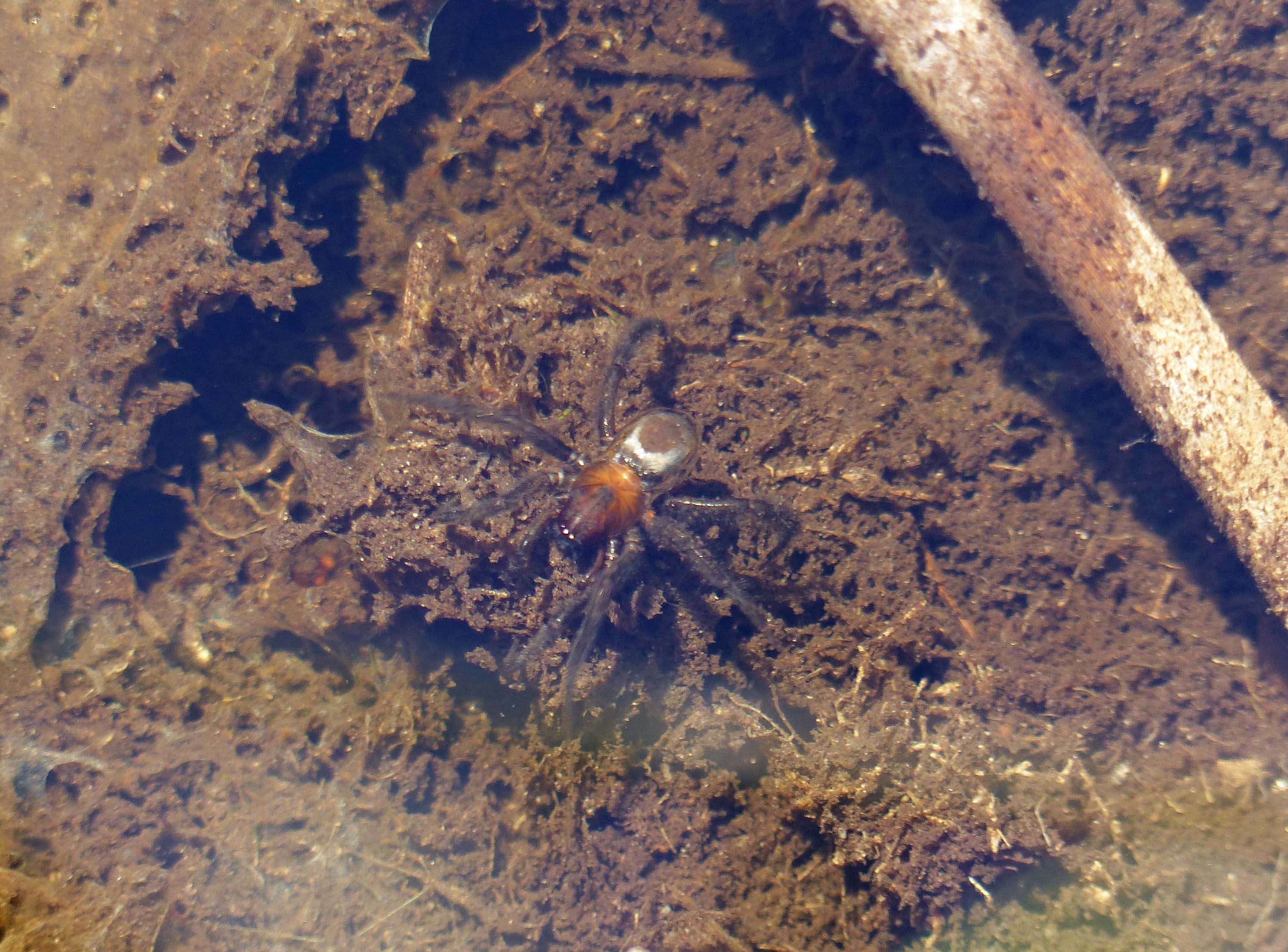
Argyroneta aquatica the Water Spider can be another source of confusion with Dolomedes simply because it is a relatively large spider and shares a similar habitat. This is a truly aquatic species, living underwater and constructing silk retreats that are filled with air bubbles, making them resemble diving bells. It often occurs in the same water bodies as D. plantarius although its appearance is very different, and it is only infrequently seen above water.
To download a pocket ID card to help you to identify Dolomedes species in the field, click here. This card was produced by the Broads Authority.
References
Baillie, A. L., Baillie, S. R. & Smith, H. 2019. The heritability of lateral banding in Dolomedes plantarius. Arachnology 18: 237-244.
Duffey, E. 1995. The distribution, status and habitats of Dolomedes fimbriatus (Clerk) and D. plantarius (Clerk) in Europe. In: Ružicka V. (Ed.), Proceedings of the 15th European Colloquium of Arachnology, Institute of Entomology, Ceské Budejovice: 54-65.
Helsdingen, van P. J.1995. Ecology and distribution of Dolomedes in Europe (Araneida, Solomedidae). Proceedings of the 9th International Colloquium of the European Invertebrate Survey, Helsinki, 3-4 September 1993. WWF Finland 7: 41-46.
Spider Recording Scheme 2020a. Dolomedes fimbriatus species account: srs.britishspiders.org.uk/portal.php/p/Summary/s/Dolomedes+fimbriatus. Downloaded 31-12-2020
Spider Recording Scheme 2020b. Dolomedes plantarius species account: srs.britishspiders.org.uk/portal.php/p/Summary/s/Dolomedes+plantarius. Downloaded 31-12-2020.
